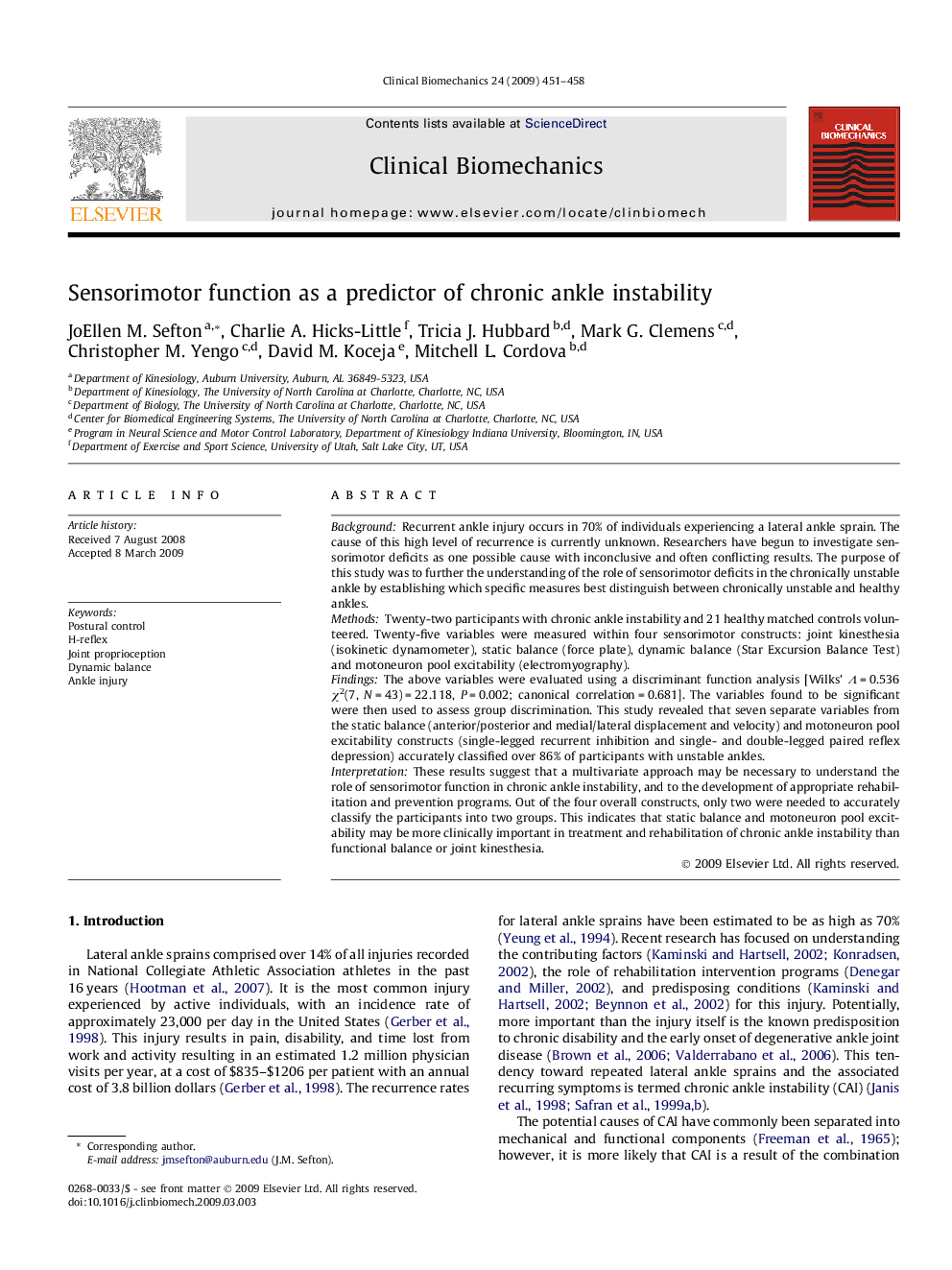| Article ID | Journal | Published Year | Pages | File Type |
|---|---|---|---|---|
| 4051335 | Clinical Biomechanics | 2009 | 8 Pages |
BackgroundRecurrent ankle injury occurs in 70% of individuals experiencing a lateral ankle sprain. The cause of this high level of recurrence is currently unknown. Researchers have begun to investigate sensorimotor deficits as one possible cause with inconclusive and often conflicting results. The purpose of this study was to further the understanding of the role of sensorimotor deficits in the chronically unstable ankle by establishing which specific measures best distinguish between chronically unstable and healthy ankles.MethodsTwenty-two participants with chronic ankle instability and 21 healthy matched controls volunteered. Twenty-five variables were measured within four sensorimotor constructs: joint kinesthesia (isokinetic dynamometer), static balance (force plate), dynamic balance (Star Excursion Balance Test) and motoneuron pool excitability (electromyography).FindingsThe above variables were evaluated using a discriminant function analysis [Wilks’ Λ = 0.536 χ2(7, N = 43) = 22.118, P = 0.002; canonical correlation = 0.681]. The variables found to be significant were then used to assess group discrimination. This study revealed that seven separate variables from the static balance (anterior/posterior and medial/lateral displacement and velocity) and motoneuron pool excitability constructs (single-legged recurrent inhibition and single- and double-legged paired reflex depression) accurately classified over 86% of participants with unstable ankles.InterpretationThese results suggest that a multivariate approach may be necessary to understand the role of sensorimotor function in chronic ankle instability, and to the development of appropriate rehabilitation and prevention programs. Out of the four overall constructs, only two were needed to accurately classify the participants into two groups. This indicates that static balance and motoneuron pool excitability may be more clinically important in treatment and rehabilitation of chronic ankle instability than functional balance or joint kinesthesia.
